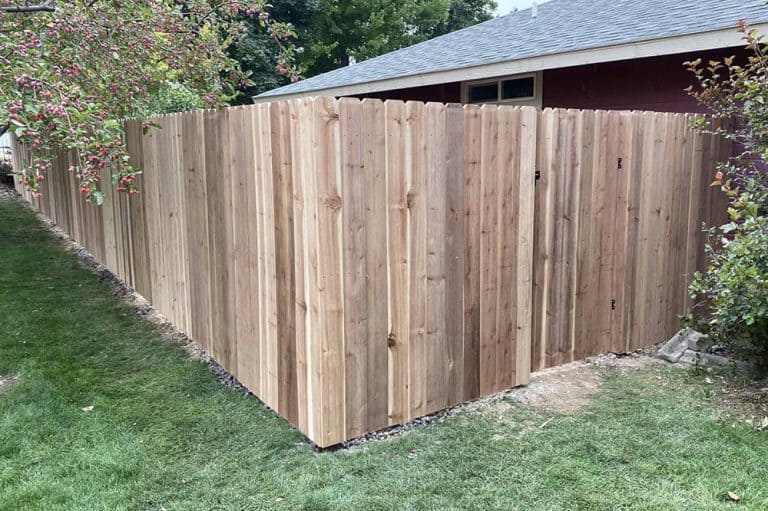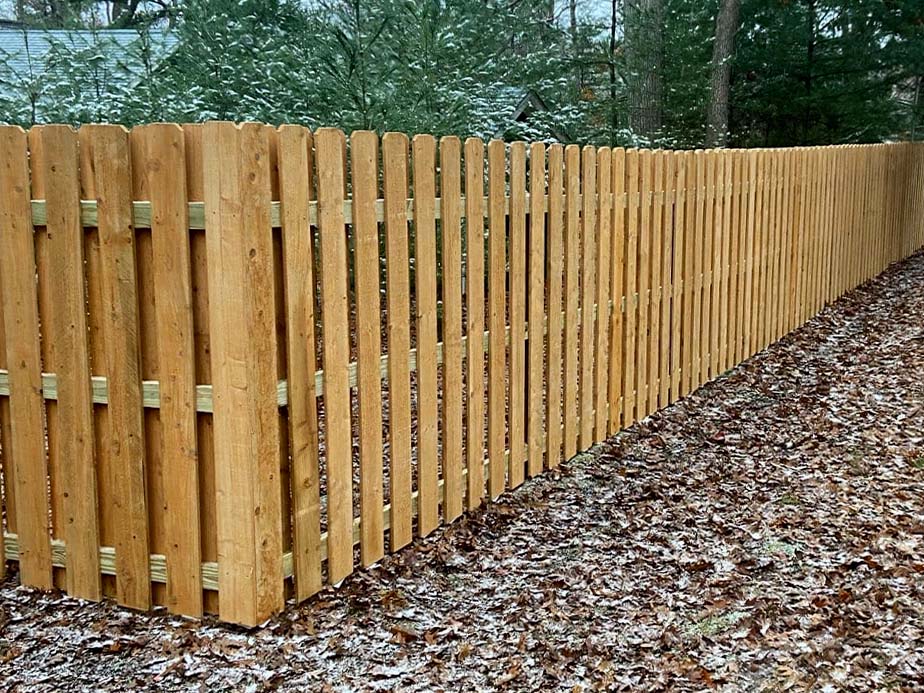Your Guide to Hiring a Reputable Fence Contractor Owensboro KY
Your Guide to Hiring a Reputable Fence Contractor Owensboro KY
Blog Article
How to Identify Common Concerns That Require Immediate Fence Repair Service
It is important to find problems prior to they end up being larger problems when it comes to maintaining your fence. Regularly looking for signs of deteriorating timber, leaning panels, or corrosion can conserve you money and time over time. You may not understand just how weather condition and insects can jeopardize your fencing's integrity. Let's discover the typical indicators that indicate your fencing needs instant focus, so you can maintain your residential or commercial property secure and looking its finest.
Indications of Rotting Timber in Wooden Fences
Have you noticed your wood fencing looking a little bit shabby? If so, it may be time to look for indicators of decomposing timber. First, check out the base of the articles and panels for soft places. That's a clear indication of rot if you press on the wood and it feels mushy or crumbles. Next, try to find staining or dark places on the timber-- these typically signal moisture damages. Take notice of any peeling off paint or coating, as this can reveal the wood to additional decay. Furthermore, a pungent, moldy scent can show fungal development. Don't neglect to check joints and links; if they're loose or falling apart, the wood beneath is likely compromised. By catching these signs early, you can protect against a lot more extensive damages and keep your fence standing solid. Normal maintenance is key to extending the life of your wood fencing.
Leaning or Tilting Fence Panels
If you've discovered your fence panels leaning or tilting, it's essential to recognize what created it. This issue may show underlying structural damage that needs your attention. Let's explore the usual causes and the fixing choices available to get your fence back in form.

Reasons For Leaning Panels
When you notice your fencing panels leaning or tilting, it's typically an indication of underlying issues that need addressing. One typical reason is poor drainage; extreme water can erode the dirt around the fencing blog posts, compromising their assistance. One more wrongdoer might be strong winds or tornados that push versus the panels, particularly if they're not correctly secured. Additionally, the natural settling of soil over time can trigger posts to move, leading to a tilt. Parasites, like termites, can compromise the stability of wood panels, creating them to lean also. Finally, poor installation practices might result in panels not being safely established, leaving them vulnerable to leaning under pressure. Address these issues without delay to preserve your fence's stability.
Indications of Architectural Damage
Observing leaning or turning fencing panels can be startling, as these issues usually indicate architectural damage that needs immediate attention. When your fence starts to lean, it may signal that the messages are moving or that the soil around them has eroded. Pay attention to voids between panels or articles, as these can also suggest instability. deck builder. In addition, check for cracks or splintering in the timber, which can deteriorate the general framework. It might compromise the honesty of the fence if you see corrosion or corrosion on metal components. Remember, neglecting these signs can lead to extra severe damages down the line, so it's necessary to assess the situation without delay and do something about it before it worsens
Fixing Options Available

Corrosion and Corrosion in Steel Fences
If you own a steel fence, you could observe corrosion and corrosion sneaking in over time, specifically if it's subjected to moisture. These problems not just impact the appearance of your fence however can additionally compromise its architectural integrity. To identify rust, look for reddish-brown areas or spots, which indicate the metal is oxidizing. Rust can spread quickly if left neglected, compromising the fence and leading to costly repairs.To take on corrosion and corrosion, you should clean the affected areas with a wire brush and use a rust-inhibiting primer. When the guide dries out, think about painting the fence with a weather-resistant paint to safeguard it better. Routine upkeep, such as checking for indications of rust and repairing paint as needed, will assist expand your fence's life-span. Addressing these problems immediately assures your metal fence remains strong and aesthetically appealing for years to find.
Fractures and Splits in Vinyl Fencing

Sources Of Plastic Damages
Plastic fencing is preferred for its resilience, yet it can still experience splits and divides as a result of numerous factors. One significant reason is extreme temperature level variations. It can deteriorate the product over time when plastic increases in the warm and agreements in the chilly. Furthermore, exposure to severe sunlight can bring about UV deterioration, making the plastic weak. Physical effects, like unintentional accidents or hefty branches, can also develop cracks. Poor installment or using low-grade materials can aggravate these problems. Age plays a duty; older vinyl fence is more prone to damages. Normal evaluations can assist you identify these factors before they cause considerable issues. Take proactive measures to ensure your fencing remains undamaged and solid.
Repairing Cracks Properly
Although fractures and splits in your plastic fencing can be concerning, resolving them promptly can stop further damage and preserve the fencing's appearance. Evaluate the size of the fracture. For little cracks, a plastic repair work set typically consists of adhesive that can read more bond the edges, giving a seamless repair. Tidy the area completely prior to using the adhesive, ensuring it adheres correctly. For larger splits, you might need to use a vinyl patch. Cut the spot to size, apply sticky around the edges, and press it firmly onto the split. Enable it to treat as per the producer's directions. Routine upkeep and quick fixings can expand your fencing's life expectancy, keeping it looking fantastic for many years to find.
Loose or Missing Fencing Messages
Missing or loose fence articles can threaten the security of your entire fencing framework. It's important to address the problem immediately if you discover any articles leaning or tottering. Look for any type of indications of activity, as this can cause additional damage with time. You can easily assess the trouble by providing each blog post a mild shake-- if it feels unstable, it's time to take action.For missing out on blog posts, you'll need to change them as quickly as possible to keep your fencing's integrity. Make certain they're securely anchored in the ground with concrete or crushed rock for added stability when you mount new blog posts. If a blog post hangs, tighten it by adding additional support or driving it deeper right into the ground.Ignoring these concerns can result in bigger problems, like voids in your fence and even total collapse. Keep an eye on your posts and stay aggressive about fixings!
Damages From Weather Condition and Natural Components
Weather and natural environments can ruin your fence, bring about numerous forms of damage that need punctual focus. Heavy rainfall can create timber to rot, making it unstable and weak. Snow buildup could flex or break panels, while strong winds can uproot fence posts or cause sections to lean.If you discover fractures or splintering in wooden fencings, it signifies drying out due to intense sun exposure. Metal fencings can corrosion if safety finishings wear off, specifically in coastal or moist areas.Inspect your fencing frequently after storms or severe climate to capture any type of damage early. Attending to these issues quickly can conserve you from pricey fixings down the line. Do not wait up until a little problem develops into a major one; remain proactive and keep your fence leading form to maintain both performance and curb charm.
Insect Invasion and Termite Damage
It's crucial to act swiftly to avoid further destruction when you notice signs of parasite infestation or termite damages. Search for mud tubes along your fencing or hollow-sounding wood, as these show termites are at job. You might likewise see tiny openings or frass, which is termite droppings resembling sawdust. If you spot any one of these indications, it's time to evaluate the damage.Don' t wait up until it's far too late; parasites can compromise your fencing's integrity. Check the surrounding location for ants or beetles, as they might be adding to the trouble. If you suspect an invasion, think about contacting an insect control expert to deal with the issue.repairing and validate or replacing damaged areas of your fence without delay not only restores its strength but likewise stops insects from spreading even more. Remain attentive to keep your home pest-free and protected.
Often Asked Inquiries
Just how Often Should I Check My Fence for Damage?
You need to inspect your fencing a minimum of two times a year, preferably throughout spring and loss. Regular checks help you spot damage early, saving you money and time on fixings while preserving your building's appearance and security.
Can I Repair a Fencing Myself or Hire an Expert?
If you have the right tools and skills, you can absolutely repair a fence yourself. Nevertheless, working with a professional warranties high quality work and saves you time, particularly for intricate fixings or extensive damages.
What Devices Are Required for Basic Fencing Fixings?
For basic fencing repairs, you'll require devices like a hammer, screwdriver, pliers, a saw, a level, and determining tape. deck builder. Relying on the repair work, you could additionally need nails, screws, or replacement boards
Just How Much Does Fencing Fixing Generally Cost?
Fence repair prices differ commonly, however you can anticipate to pay in between $200 and $1,500 depending upon products, labor, and extent of damages. It's smart to obtain several quotes for the very best offer.
When Is the very best Time of Year for Fence Repair Works?
The ideal time for fence repair work is during mild weather condition, normally in spring or early loss. You'll stay clear of severe temperature levels, making it much easier to function and guaranteeing the materials established appropriately for lasting sturdiness (deck builder). Discovering turning or leaning fencing panels can be alarming, as these problems often suggest architectural damages that needs immediate attention. Loosened or absent fence blog posts can threaten the stability of your whole fencing structure. Snow accumulation may flex or break panels, while strong winds can root out fence articles or create sections to lean.If you discover splits or splintering in wood fences, it's an indication of drying out due to intense sunlight direct exposure. Metal fencings can corrosion if protective finishings put on off, especially in seaside or damp areas.Inspect your fence on a regular basis after storms or severe climate to capture any kind of damages early. Fence repair service expenses differ extensively, yet you can anticipate to pay between $200 and $1,500 depending on materials, labor, and degree of damage
Report this page